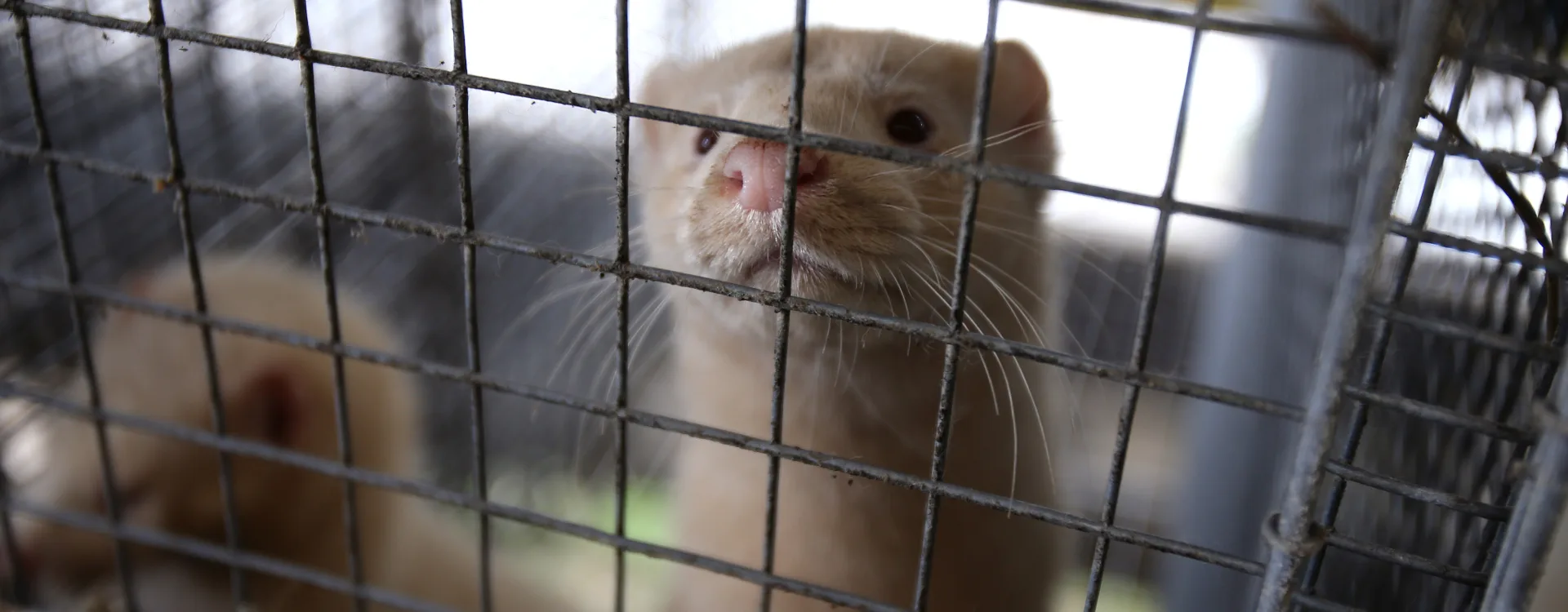
Reduced disease control at mink farms in 2023 – new farms allowed in Sweden
After 31st of December there are no longer any restrictions on mink farms in Sweden. The restrictions to stop the spread of SARS-CoV-2 in 2022 weren’t prolonged. The Board of Agriculture still says that there is a risk for disease introduction to minks, but that the Swedish mink association’s health programme could reduce the risks. Project 1882 is very critical to this.
This is a translated version of this article.
– I am very concerned that the mink industry will be responsible to do something that they couldn’t handle before – to keep the minks healthy. Even if the risk for humans is lower, it is still not negligible. There is a risk that minks become seriously ill and die in the already inadequate environment they are living in, said Camilla Bergvall, president of Project 1882.
Minks can be infected with SARS-CoV-2, which resulted in big outbreaks at mink farms all over the world during the pandemic. Movement of live minks and establishment of new mink farms therefore were forbidden in Sweden during 2022, but will again be allowed during 2023.
The decision was made by the Board of Agriculture and is, like in 2022 when the breeding ban was lifted, based on that the risks for human deaths now are lower. The earlier decision was appealed by Project 1882, with no result. A year ago some restrictions remained, even though the breeding was allowed. But the authorities will during 2023 leave all surveillance of mink health to the Swedish Mink Association’s, Svensk Mink, own programme called Minkhälsan, and remove all the restrictions.
Projekt 1882 has criticized Minkhälsan before in an extensive report, and the conclusion is that it only demands one more visit by a veterinarian per year, compared to what the legislation already requires. The last years have also made it clear that several mink farms didn’t follow the restrictions during the pandemic, and that there are long periods when they aren’t controlled. One farm was infected during 2021, even though the humans were vaccinated and the breeding ban was in place. The whole farm can become infected if only one single worker comes in with infection, with higher mortality and respiration problems in the minks as a consequence.
Risks for public health remain
Transmission of disease on mink farms continued during 2022, for example in Poland. All transmission between minks risks a virus evolution that could make the disease more dangerous for humans.
The authorities state that a reassessment can be needed if the transmission between humans and minks increases. But where that limit lies is unclear.
– More needs to be done now, when the authorities have released their grip on mink farms. To make a safe society, without mink farms, the politicians need to act. And it is urgent, said Camilla Bergvall.
The EU could in the spring bring forward a new decision that would demand stricter testing on minks than Sweden now does.
In Denmark the mink farms are allowed to start again in 2023, after two years of closure after the mass culling. But they have strict conditions with comprehensive testing and restrictions, as well as economical support for those that instead chose to close their farms. This has made almost all previous Danish mink farmers to instead invest in other businesses, without the exploitation of animals.
Read Project 1882’s report on how the politicians should phase out the mink farms (Swedish).
